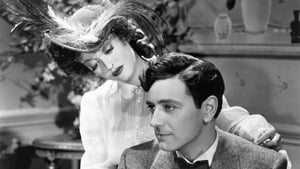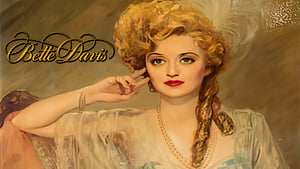Contact: info@alwanfilm.com
Video Sources 0 Views

Synopsis
Mr. Skeffington 1944 Colorized Review: A Melodrama of Love, Loss, and Redemption

Introduction
Released in 1944, Mr. Skeffington is a film that explores the complexities of vanity, love, and redemption, set against the backdrop of the early 20th century. Directed by Vincent Sherman and featuring stellar performances from Bette Davis and Claude Rains, this classic drama has remained a favorite for fans of Hollywood’s Golden Age. Known for its richly layered characters and poignant storyline, Mr. Skeffington stands out for its exploration of themes that resonate with audiences even today.
In this review, we will delve into the details that make Mr. Skeffington an unforgettable classic, examining the director’s vision, the cast’s iconic performances, and the unique elements that have made the film an enduring part of cinematic history. We’ll also discuss the film’s reception, legacy, and the broader cultural impact it has had on the genre of romantic drama.
Check The Full Colorized Movies List
Check Our Colorized Movies Trailer Channel
Understanding Mr. Skeffington 1944 Colorized: Director, Cast, and Genre
Director’s Vision
Directed by Vincent Sherman, Mr. Skeffington demonstrates the director’s gift for bringing out the best in his actors and drawing deep emotional nuances from each scene. Sherman was known for his work in melodrama, and his approach to Mr. Skeffington balances both the internal struggles of its characters and the external conflicts that shape their lives. His direction is characterized by a careful handling of complex themes, allowing the characters’ personal growth and transformation to unfold gradually over the film’s duration. Sherman’s cinematic vision brings an aura of authenticity to Mr. Skeffington, making it one of his standout directorial achievements.
The Iconic Performance of Actors
Bette Davis stars as Fanny Trellis Skeffington, a glamorous but self-centered woman who marries Job Skeffington, a wealthy businessman portrayed by Claude Rains. Davis, one of the most iconic actresses of her time, delivers a multifaceted performance that captures Fanny’s descent from a captivating socialite to a broken and lonely woman. Her portrayal is widely considered one of her most complex roles, blending her character’s vanity with a genuine vulnerability that emerges as the story progresses.
Claude Rains brings an equally powerful performance to the role of Job Skeffington. His portrayal of the long-suffering husband who remains devoted to Fanny despite her flaws adds a layer of depth to the story. Rains, known for his expressive acting, brings dignity and compassion to his character, making Job Skeffington an empathetic figure. Together, Davis and Rains create an unforgettable on-screen chemistry that lies at the heart of the film.
Exploring the Genre
Mr. Skeffington is a romantic melodrama, a genre that flourished during the Golden Age of Hollywood. Melodramas often explore intense emotions, dramatic conflicts, and moral dilemmas, all of which are central to Mr. Skeffington. The film’s themes of vanity, self-discovery, and redemption align perfectly with the conventions of the genre, offering viewers an emotional journey that is both deeply personal and universally relatable.
Exploring the World of Mr. Skeffington 1944 Colorized: Plot and Characters
Detailed Synopsis
Mr. Skeffington follows the life of Fanny Trellis, a beautiful, vain socialite in early 20th-century New York. The story begins with Fanny’s marriage to Job Skeffington, a wealthy Jewish businessman who is deeply in love with her. However, Fanny marries Job not out of love but as a means to secure financial stability for herself and her brother Trippy, who is in debt.
As the years pass, Fanny’s beauty remains her defining attribute, and she continues to revel in the attention of admirers. However, her vanity leads her to neglect Job, who eventually leaves her. Alone and without the protection of her beauty, Fanny finds herself grappling with the passage of time and the consequences of her choices. When Job falls ill, Fanny undergoes a profound transformation, coming to terms with her own failings and the true meaning of love and loyalty.
Supporting characters, including Fanny’s admirers and social circles, add layers to her story, highlighting her initial superficiality and the contrasting devotion of Job. Together, they illustrate the central themes of Mr. Skeffington, creating a narrative that is both intimate and dramatic.
The Role of Vanity in Mr. Skeffington 1944 Colorized
Understanding Vanity as a Central Theme
Vanity serves as the driving force in Mr. Skeffington, shaping Fanny’s decisions and ultimately leading to her downfall. Throughout the film, Fanny’s beauty is both her greatest asset and her biggest liability. Her obsession with appearance blinds her to the genuine love that Job offers, and it isn’t until she loses her beauty that she begins to see the emptiness of her life.
The film’s portrayal of vanity is nuanced, presenting it not merely as a character flaw but as a societal expectation that Fanny embraces. Her eventual realization of the emptiness in vanity is what drives her transformation, making it a powerful commentary on self-worth and personal growth.
The Legacy of Hollywood’s Melodrama
Rise of the Melodramatic Genre
Mr. Skeffington represents a peak in Hollywood’s melodrama era, which thrived during the 1930s and 1940s. Melodramas typically focused on romantic entanglements, social issues, and moral conflicts, drawing audiences in with their emotional depth and relatable characters. The genre allowed for intricate storytelling, exploring issues such as marriage, loyalty, and societal expectations. Mr. Skeffington embodies these themes, showcasing the complexities of love and vanity with a narrative depth that was groundbreaking at the time.
Lasting Influence on Cinema
The impact of Mr. Skeffington on the genre is evident in the way it has influenced later films and television shows. Its themes and character-driven plot have inspired countless stories that explore the fragility of love, the consequences of vanity, and the journey toward self-acceptance. The film’s legacy endures not only for its captivating story but also for the way it helped shape the conventions of romantic drama and melodrama in Hollywood.
The Evolution of Character in Mr. Skeffington 1944 Colorized
Fanny Trellis Skeffington: From Vanity to Vulnerability
Fanny’s journey from vanity to vulnerability is the heart of Mr. Skeffington. Her initial character is glamorous and self-centered, thriving on the admiration of others. However, as her beauty fades, Fanny is forced to confront her inner emptiness and the superficial nature of her relationships. This transformation is depicted with sensitivity and nuance, showcasing the complexities of Fanny’s character.
Bette Davis’s portrayal of Fanny’s descent into vulnerability is masterful, as she skillfully conveys the subtle changes in her character’s personality. The transition from a young, carefree socialite to a lonely, regretful woman is both tragic and compelling, adding layers to Fanny’s story.
Job Skeffington: A Portrait of Patience and Compassion
Job Skeffington, played by Claude Rains, serves as a foil to Fanny’s vanity. His character is defined by patience, compassion, and an unwavering love for Fanny. Despite her indifference and cruelty, Job remains devoted to her, a trait that ultimately leads Fanny to confront her own flaws. His love is depicted as selfless and enduring, providing a stark contrast to the shallowness of Fanny’s vanity.
Job’s character is instrumental in Fanny’s transformation, serving as both a mirror and a guide. His gentle but firm nature allows Fanny to realize the true value of love, highlighting the importance of integrity and kindness in relationships.
The Reception and Cultural Impact of Mr. Skeffington 1944 Colorized
Initial Reviews and Audience Reaction
Upon its release, Mr. Skeffington received acclaim from critics and audiences alike. Bette Davis’s portrayal of Fanny Trellis was particularly praised, with critics lauding her ability to bring depth and nuance to the character. Claude Rains was also celebrated for his performance as Job, with his dignified and sympathetic portrayal earning him recognition.
The film was nominated for several Academy Awards, including Best Actress for Davis and Best Supporting Actor for Rains. Mr. Skeffington struck a chord with audiences due to its relatable themes and emotional storytelling, solidifying its status as a classic melodrama.
Enduring Legacy and Influence
Mr. Skeffington continues to be revered as a classic of the Golden Age, inspiring later works in film and television. Its exploration of vanity, love, and redemption resonates with contemporary audiences, proving that its themes are timeless. The film’s success also paved the way for future melodramas, influencing the genre’s evolution and setting a high standard for character-driven storytelling.
The film’s legacy extends beyond the screen, as its themes of self-worth and transformation remain relevant in modern society. The story’s focus on the importance of inner beauty and personal growth has made it a source of inspiration, particularly for those struggling with issues of self-image and acceptance.
FAQs About Mr. Skeffington 1944 Colorized
Q: Who directed Mr. Skeffington (1944)?
A: Mr. Skeffington was directed by Vincent Sherman, a filmmaker known for his work in the melodramatic genre.
Q: What themes does Mr. Skeffington explore?
A: The film explores themes of vanity, love, self-worth, and redemption. It delves into the impact of societal expectations on personal identity and the journey toward inner transformation.
Q: How was Mr. Skeffington received upon its release?
A: Mr. Skeffington received positive reviews from critics and audiences alike. Bette Davis’s performance was widely praised, and the film was nominated for several Academy Awards.
Conclusion
Mr. Skeffington (1944) is a timeless classic that continues to captivate audiences with its exploration of vanity, love, and redemption. The film’s strong performances, particularly by Bette Davis and Claude Rains, bring depth and authenticity to its story, making it a powerful portrayal of personal transformation. Directed by Vincent Sherman, the film stands as a testament to the Golden Age of Hollywood, showcasing the best of melodramatic storytelling and character development.
The themes of Mr. Skeffington remain relevant today, resonating with viewers who recognize the importance of inner beauty and self-acceptance. Whether experiencing it for the first time or revisiting it, Mr. Skeffington offers an emotional journey that reminds us of the complexities of human relationships and the enduring power of love and forgiveness.















